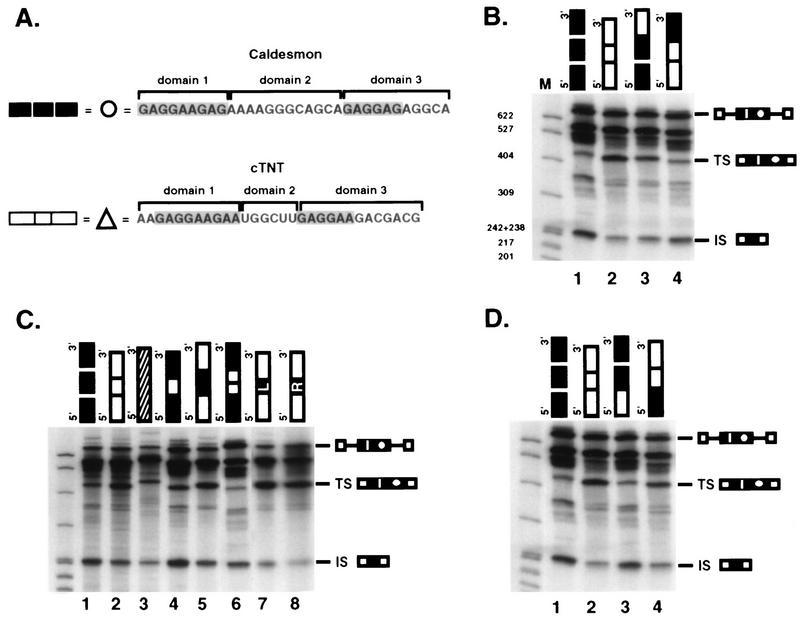FIG. 4.
Sequences within domain 3 of the enhancers provide 5′ splice site specificity. (A) The caldesmon and cTNT sequences were divided into three domains as diagrammed for the purpose of domain interchange experiments. Purine repeats of the sequence GAR are indicated (shaded). Each domain is represented by a black (caldesmon) or white (cTNT) box (heterologous sequence is represented by a striped box in panel C). (B to D) In vitro splicing of precursor RNAs containing wild-type or chimeric enhancers. Reactions were performed for 45 min. Reaction products are identified as for Fig. 2. Sizes are indicated in nucleotides. In panel C, several different chimeras containing alternate domain 2 were made to control for differences in length of domain 2 between the two enhancers. When caldesmon domain 2 sequences were inserted into the cTNT enhancer, either the entire domain (12 nucleotides) (lane 5) or 5′ or 3′ half-domains (6 nucleotides each [boxes L and R]) (lanes 7 and 8) were used. When cTNT domain 2 sequences were inserted into the caldesmon enhancer, either one copy (6 nucleotides, represented by one white box) or two copies (two white boxes) were used.

